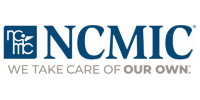Wayne A. Ray, Ph.D., Katherine T. Murray, M.D., Sarah Meredith, M.B., B.S., Sukumar Suguna Narasimhulu, M.B., B.S., M.P.H., Kathi Hall, M.S., and C. Michael Stein, M.B., Ch.B. ABSTRACT Background Oral erythromycin prolongs cardiac repolarization and is associated with case reports of torsades de pointes. Because erythromycin is extensively metabolized by cytochrome P-450 3A (CYP3A) isozymes, commonly used medications that inhibit the effects of CYP3A may increase plasma erythromycin concentrations, thereby increasing the risk of ventricular arrhythmias and sudden death. We studied the association between the use of erythromycin and the risk of sudden death from cardiac causes and whether this risk was increased with the concurrent use of strong inhibitors of CYP3A. Methods We studied a previously identified Tennessee Medicaid cohort that included 1,249,943 person-years of follow-up and 1476 cases of confirmed sudden death from cardiac causes. The CYP3A inhibitors used in the study were nitroimidazole antifungal agents, diltiazem, verapamil, and troleandomycin; each doubles, at least, the area under the time–concentration curve for a CYP3A substrate. Amoxicillin, an antimicrobial agent with similar indications but which does not prolong cardiac repolarization, and former use of erythromycin also were studied, to assess possible confounding by indication Results The multivariate adjusted rate of sudden death from cardiac causes among patients currently using erythromycin was twice as high (incidence-rate ratio, 2.01; 95 percent confidence interval, 1.08 to 3.75; P=0.03) as that among those who had not used any of the study antibiotic medications. There was no significant increase in the risk of sudden death among former users of erythromycin (incidence-rate ratio, 0.89; 95 percent confidence interval, 0.72 to 1.09; P=0.26) or among those who were currently using amoxicillin (incidence-rate ratio, 1.18; 95 percent confidence interval, 0.59 to 2.36; P=0.65). The adjusted rate of sudden death from cardiac causes was five times as high (incidence-rate ratio, 5.35; 95 percent confidence interval, 1.72 to 16.64; P=0.004) among those who concurrently used CYP3A inhibitors and erythromycin as that among those who had used neither CYP3A inhibitors nor any of the study antibiotic medications. In contrast, there was no increase in the risk of sudden death among those who concurrently used amoxicillin and CYP3A inhibitors or those currently using any of the study antibiotic medications who had formerly used CYP3A inhibitors. Conclusions The concurrent use of erythromycin and strong inhibitors of CYP3A should be avoided. Source Information: From the Division of Pharmacoepidemiology, Department of Preventive Medicine (W.A.R., S.M., K.H.), and the Departments of Medicine and Pharmacology, Divisions of Cardiology (K.T.M.), Clinical Pharmacology (K.T.M., S.S.N., C.M.S.), and Rheumatology (C.M.S.), Vanderbilt University School of Medicine; and the Geriatric Research, Education, and Clinical Center, Nashville Veterans Affairs Medical Center (W.A.R.) — both in Nashville. Address reprint requests to Dr. Ray at [email protected].
- Home
- About
- Find a Doctor
- Membership
- Education
- News
- Newsletter
- Conventions & Symposiums
- Webinars
- Positive Press (F4CP) ↪
- Insurance and Medicare ⚿
- New Practitioners ⚿
- Center for Excellence ⚿
- Informative Links
- Mandated Reporter Training↪
- Leadership
- Officers and Regional Directors
- Districts
- District Officers ⚿
- District Map
- District 1 (Manhattan)
- District 2 (Brooklyn)
- District 3 (Queens)
- District 4 (Bronx)
- District 5 (Staten Island)
- District 6 (Nassau)
- District 7 (Suffolk)
- District 8 (Westchester)
- District 9 (Mid-Hudson)
- District 10 (Capital Region)
- District 11 (Mohawk Valley)
- District 12 (Central NY)
- District 13 (Binghamton Area)
- District 14 (Rockland County)
- District 15 (Finger Lakes)
- District 16 (Southern Tier)
- District 17 (Western NY)
- Committees
- Bylaws ⚿
- Code of Ethics ⚿
- Elections ⚿
- Advocacy
- Sponsors
- Classifieds




